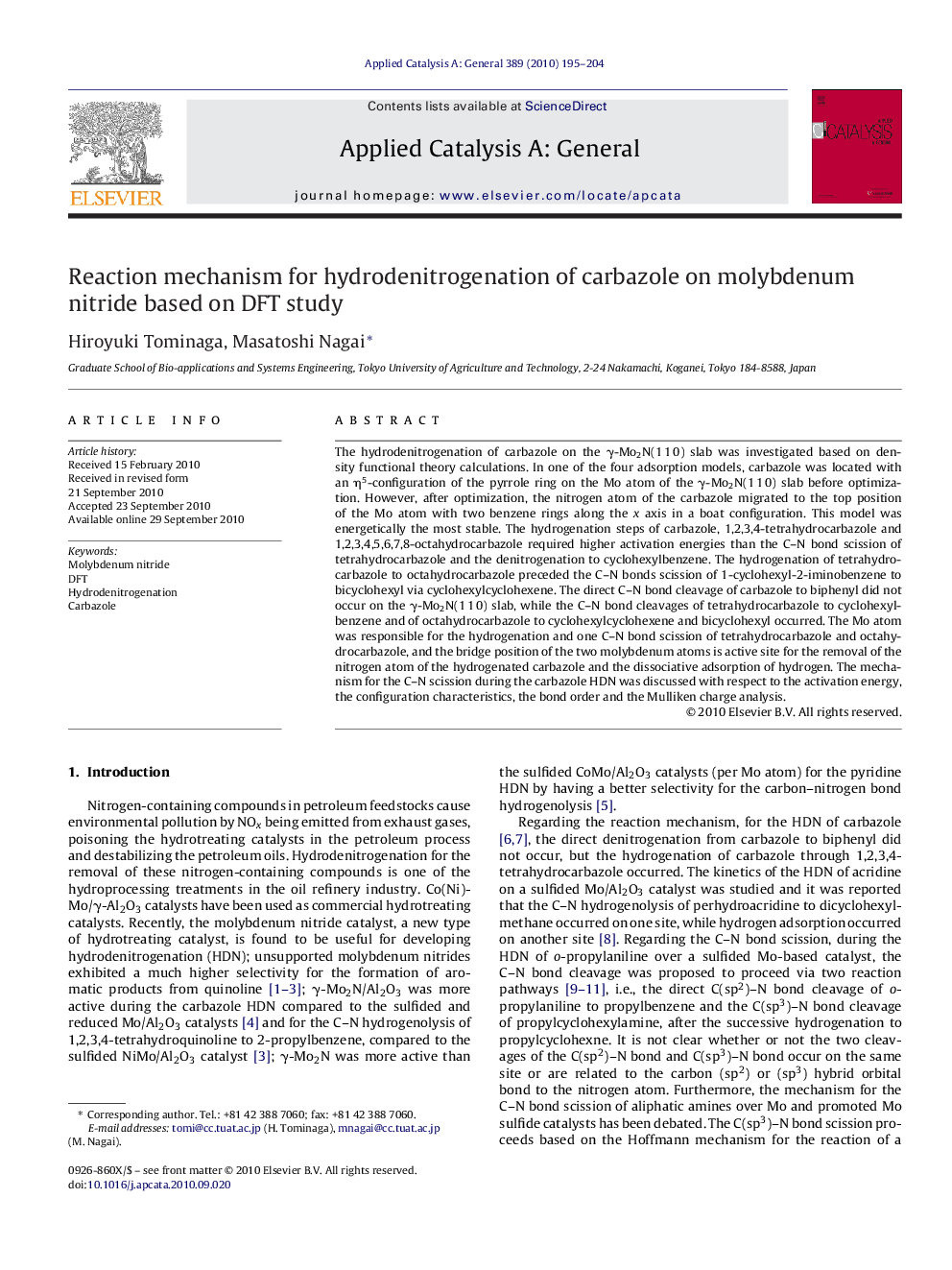| کد مقاله | کد نشریه | سال انتشار | مقاله انگلیسی | نسخه تمام متن |
|---|---|---|---|---|
| 41897 | 45903 | 2010 | 10 صفحه PDF | دانلود رایگان |

The hydrodenitrogenation of carbazole on the γ-Mo2N(1 1 0) slab was investigated based on density functional theory calculations. In one of the four adsorption models, carbazole was located with an η5-configuration of the pyrrole ring on the Mo atom of the γ-Mo2N(1 1 0) slab before optimization. However, after optimization, the nitrogen atom of the carbazole migrated to the top position of the Mo atom with two benzene rings along the x axis in a boat configuration. This model was energetically the most stable. The hydrogenation steps of carbazole, 1,2,3,4-tetrahydrocarbazole and 1,2,3,4,5,6,7,8-octahydrocarbazole required higher activation energies than the C–N bond scission of tetrahydrocarbazole and the denitrogenation to cyclohexylbenzene. The hydrogenation of tetrahydrocarbazole to octahydrocarbazole preceded the C–N bonds scission of 1-cyclohexyl-2-iminobenzene to bicyclohexyl via cyclohexylcyclohexene. The direct C–N bond cleavage of carbazole to biphenyl did not occur on the γ-Mo2N(1 1 0) slab, while the C–N bond cleavages of tetrahydrocarbazole to cyclohexylbenzene and of octahydrocarbazole to cyclohexylcyclohexene and bicyclohexyl occurred. The Mo atom was responsible for the hydrogenation and one C–N bond scission of tetrahydrocarbazole and octahydrocarbazole, and the bridge position of the two molybdenum atoms is active site for the removal of the nitrogen atom of the hydrogenated carbazole and the dissociative adsorption of hydrogen. The mechanism for the C–N scission during the carbazole HDN was discussed with respect to the activation energy, the configuration characteristics, the bond order and the Mulliken charge analysis.
Figure optionsDownload high-quality image (72 K)Download as PowerPoint slideResearch highlights▶ We find the best solutions to the following four questions. ▶ Where are the active sites of hydrogenation and C–N bonds scission. ▶ What is the driving force of the hydrogenation and C–N bond scission. ▶ Why the nitrogen atom was not directly removed from the nitrogen compounds.
Journal: Applied Catalysis A: General - Volume 389, Issues 1–2, 1 December 2010, Pages 195–204